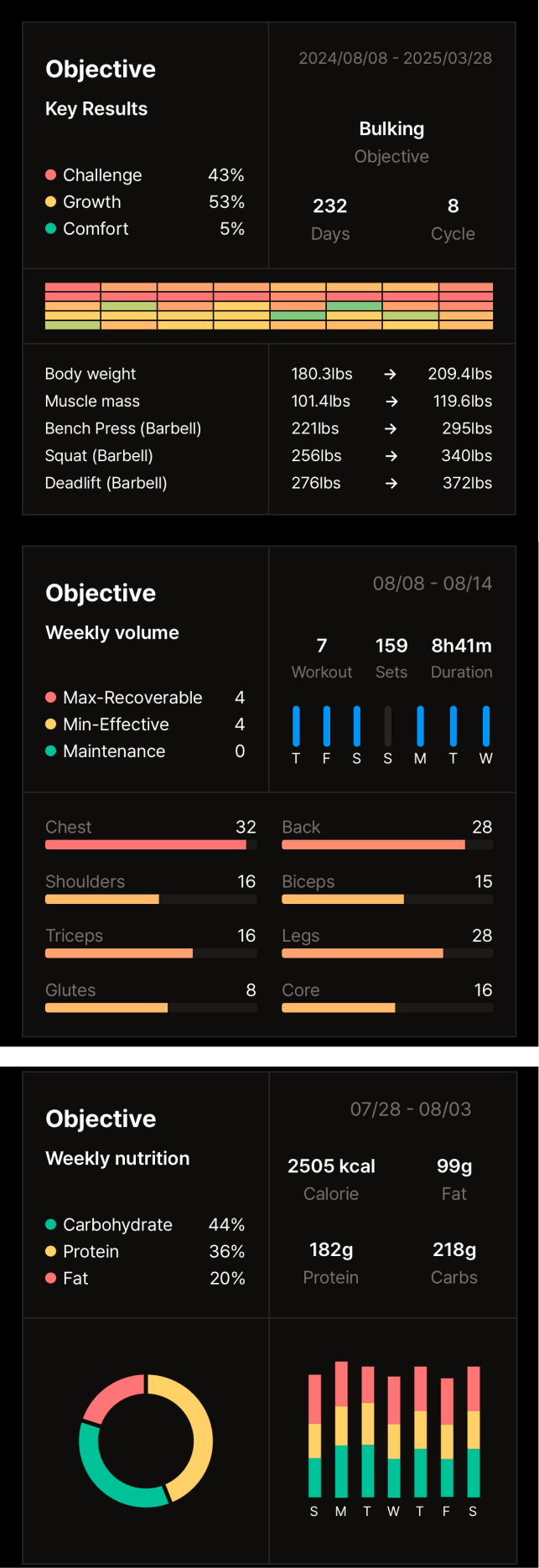Progressive Overload: How to Keep Improving
Introduction
Imagine lifting the same weight every time you work out. At first, it feels challenging, but over time, it becomes easy. This happens because your body adapts. How do you ensure continual improvement? This article explores progressive overload—a key training principle for enhancing strength and muscle growth. We’ll cover what it is, why it matters, and how to apply it effectively in your workouts. Let’s take a journey from stagnation to strength, discovering how small, consistent changes can lead to big results.
Understanding Progressive Overload
What is Progressive Overload?
Progressive overload is the gradual increase of stress placed on the body during exercise. This stress forces the body to adapt, leading to increased strength, muscle growth (hypertrophy), and improved overall fitness. The fundamental principle is to consistently challenge your muscles beyond what they're accustomed to. 
The science behind progressive overload lies in muscle adaptation. When you consistently challenge your muscles, they experience microscopic tears. During rest and recovery, these tears are repaired, and the muscle fibers become stronger and thicker. This cycle of stress, repair, and growth is the foundation of progressive overload.
Importance of Progressive Overload in Fitness
Progressive overload is crucial for both beginners and experienced fitness enthusiasts. For beginners, it helps build a foundation of strength and muscle mass. For those with more training experience, it's essential for breaking through plateaus and continuing to make progress. Without progressive overload, your workouts become maintenance routines rather than growth stimulators.
Compared to traditional training methods that may involve the same exercises and weights week after week, progressive overload ensures continual improvement. It encourages the body to adapt and grow, leading to more significant gains in strength, muscle size, and overall fitness.
Key Principles of Progressive Overload
Increasing Weights Gradually
One primary method of progressive overload is incrementally increasing the weight you lift. Start with a weight that challenges you for the designated number of repetitions but allows you to maintain proper form. As you get stronger, increase the weight in small increments, typically 1-2 kg for upper body exercises and 2-4 kg for lower body exercises.
For example, if you can comfortably perform 3 sets of 8 repetitions with 23 kg on the bench press, try increasing the weight to 24 or 25 kg the following week. This gradual increase ensures safe and sustainable progress.
Adjusting Reps and Sets
Another effective way to apply progressive overload is by adjusting the number of repetitions (reps) and sets you perform. If you're aiming for muscle growth (hypertrophy), a common rep range is 8-12. Once you can comfortably perform 3 sets of 12 reps with a particular weight, consider increasing the weight or adding another set.
For beginners, a sample progression plan might involve starting with 2 sets of 8 reps and gradually increasing to 3 sets of 12 reps over several weeks. Once this is achieved, the weight can be increased, and the rep range can be adjusted again.
Enhancing Exercise Intensity
Intensity techniques offer another avenue for progressive overload. These techniques manipulate the tempo of your lifts or incorporate pauses, making the exercise more challenging without necessarily increasing the weight. Examples include slow negatives, pause reps, and drop sets.
Slow negatives involve lowering the weight slowly and controlled, emphasizing the eccentric phase of the lift. Pause reps involve pausing at the bottom of the movement for a specified duration (typically 1-3 seconds). These techniques increase time under tension, promoting muscle growth.
Designing an Effective Progressive Overload Program
Setting Clear Goals
Setting clear, measurable, achievable, relevant, and time-bound (SMART) goals is essential for an effective progressive overload program. Your goals should align with your overall fitness objectives, whether it's building muscle, increasing strength, or improving overall fitness.
For example, if your goal is to increase your bench press by 9 kg in three months, your progressive overload program should be designed to gradually work towards that specific target. 
Tracking Progress
Tracking your workouts is crucial for monitoring progress and making necessary adjustments to your progressive overload program. Keep a workout journal or use a fitness tracking app to record the exercises, weights, sets, reps, and rest periods for each workout.
This data provides valuable insights into your progress, helping you identify areas where you're excelling and areas that need improvement. It also allows you to objectively assess the effectiveness of your progressive overload strategy.
Adapting to Plateaus
Plateaus are inevitable in any fitness journey. Recognizing the signs of a plateau, such as stalled progress in weight lifted or reps performed, is crucial for adapting your program and continuing to make gains. When you hit a plateau, consider changing your training variables, such as exercise selection, rep ranges, sets, rest periods, or intensity techniques. You might also need to re-evaluate your nutrition and recovery strategies.
Avoiding Common Mistakes
Overtraining and Recovery
Overtraining can hinder your progress and increase the risk of injury. It’s essential to balance intense training with adequate rest and recovery. Listen to your body and be mindful of signs of overtraining, such as persistent muscle soreness, decreased performance, fatigue, and loss of motivation. 
Ensure you get enough sleep, incorporate rest days into your training program, and consider active recovery methods like light cardio or stretching.
Ignoring Nutrition
Nutrition plays a vital role in supporting muscle growth and recovery. Consume a balanced diet with sufficient protein to support muscle repair and growth. Adequate calorie intake is also essential for fueling your workouts and facilitating recovery. 
Protein is particularly important for building and repairing muscle tissue. Aim to consume around 0.8-1 gram of protein per pound of body weight (1.6-2.2 grams per kg) per day.
Misunderstanding Technique
Proper form and technique are paramount for maximizing the benefits of progressive overload and preventing injuries. Focus on executing exercises correctly before increasing the weight or intensity.
If you're unsure about proper form, consult with a qualified fitness professional or refer to reputable resources online. Consider filming yourself performing exercises to analyze your form.
Advanced Techniques for Experienced Lifters
Progressive Overload vs. Advanced Training Methods
While progressive overload is a fundamental principle, more advanced training methods like periodization can be incorporated as you progress. Periodization involves cycling through different training phases with varying volumes, intensities, and rep ranges to optimize results and prevent plateaus.
Consider exploring these advanced techniques once you have a solid foundation in strength training and understand the principles of progressive overload.
Incorporating Cardiovascular Fitness
Progressive overload can also be applied to cardiovascular training. Gradually increase the duration, intensity, or frequency of your cardio workouts to improve your cardiovascular fitness. Finding a balance between strength training and cardiovascular exercise is beneficial for optimal overall health and fitness.
Conclusion
Progressive overload is a cornerstone of effective strength training and muscle growth. By gradually increasing the demands placed on your muscles, you stimulate adaptation, leading to significant improvements in strength, size, and overall fitness. Remember the key principles: increase weights, adjust reps and sets, and enhance intensity.
Implement these insights into your fitness routine, track your progress, and adjust your program as needed. Patience and consistency are key to achieving your fitness goals. For personalized guidance, consider consulting with a certified fitness professional or exploring further research on progressive overload and its applications. 

